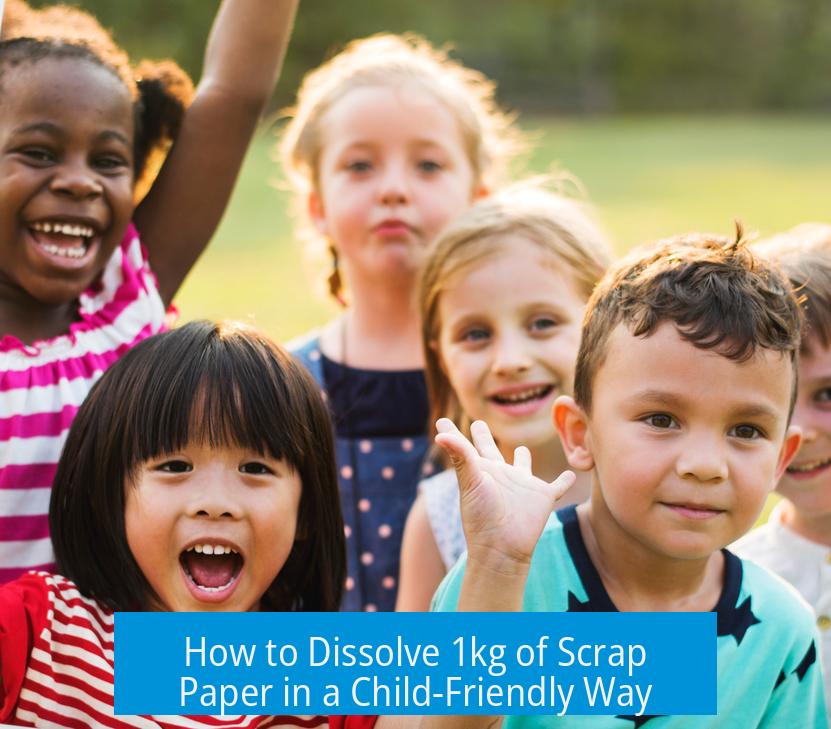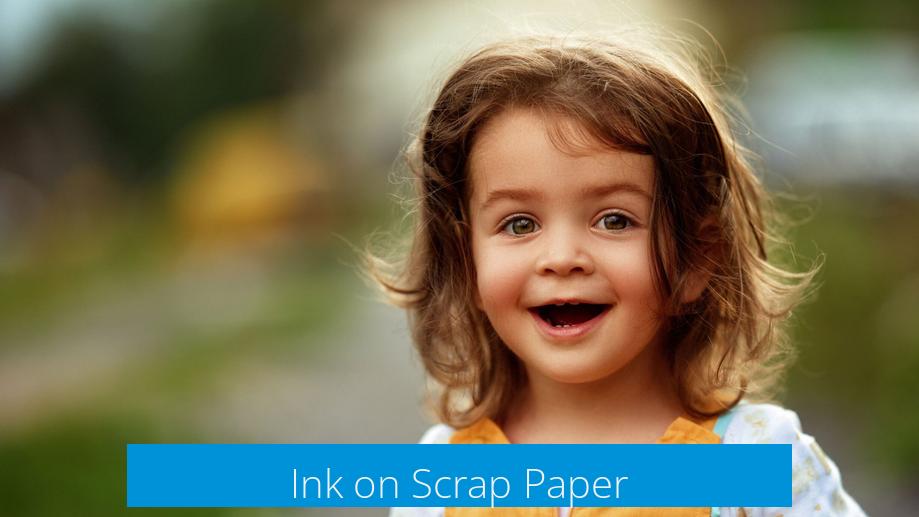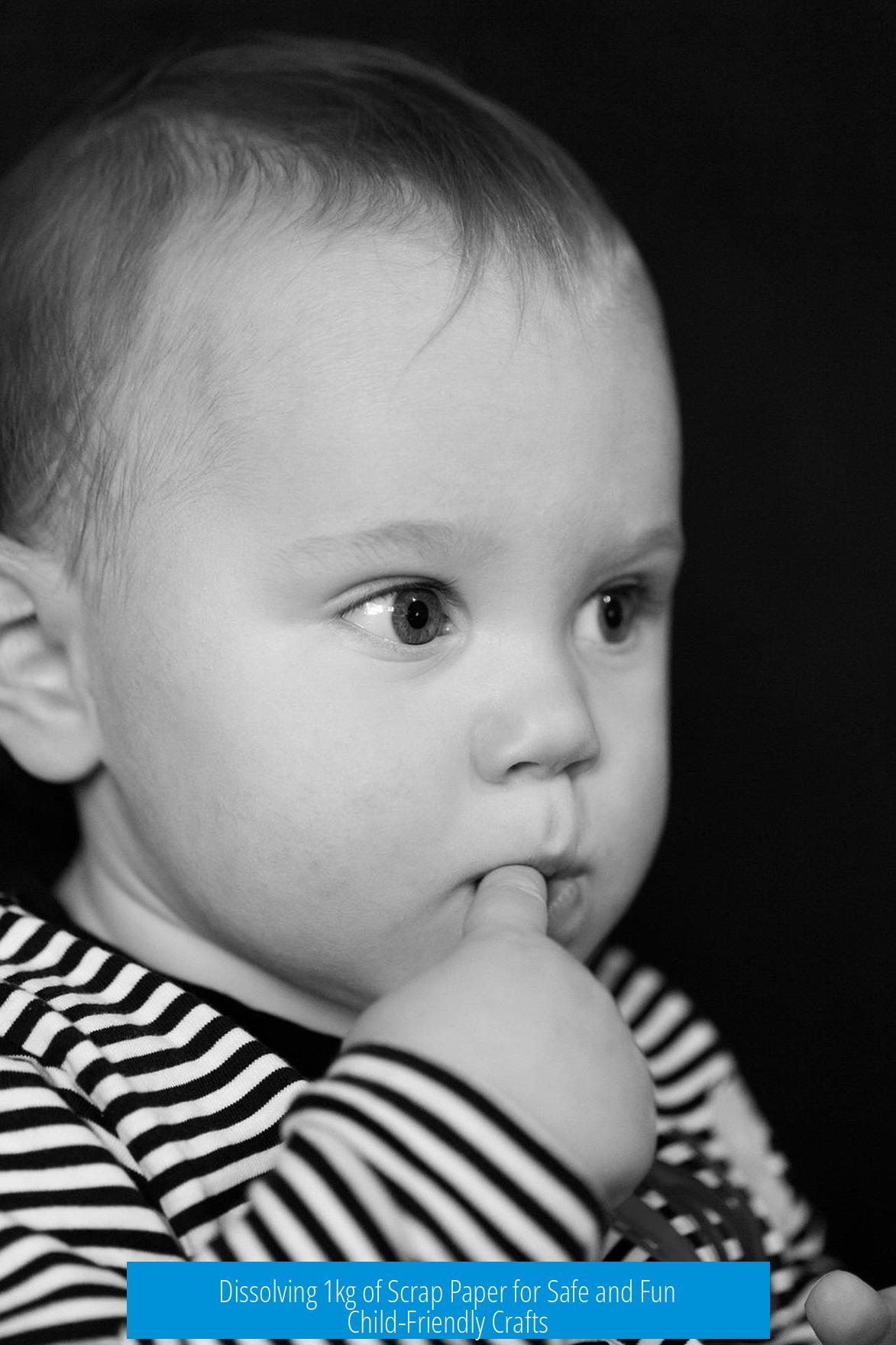How to Dissolve 1kg of Scrap Paper in a Child-Friendly Way

The best way to dissolve 1 kilogram of scrap paper safely for children is to shred or tear it into small pieces, soak it in warm water until it softens into a pulp, then optionally add a small amount of glue for projects like papier-mâché. This method avoids hazardous chemicals, relies on mechanical breakdown, and produces a mushy, usable paper pulp suitable for crafts and educational activities.
Understanding Paper Dissolution
Completely dissolving paper involves breaking down cellulose, the main fiber in paper. This process typically requires strong, harmful chemicals not safe for children. For a child-friendly approach, it is not necessary to fully chemically dissolve the paper. Instead, mechanical and water-based methods effectively soften the scrap paper into a pulp good for arts and crafts.
Step 1: Prepare the Scrap Paper
Start by tearing or shredding 1 kilogram of scrap paper into small pieces. Smaller pieces increase surface area, making the fibers break down faster when soaked. Shredding accelerates the process and helps yield a more uniform pulp.
- Use safety scissors if tearing manually.
- Shred using a paper shredder if available for better consistency.
- Remove any staples, plastic, or heavy ink to avoid residue.
Step 2: Soaking the Paper
Place the shredded paper into a large container. Pour warm water over the paper to cover it completely. Warm water speeds up fiber softening by loosening the paper structure but avoid boiling water that may be unsafe for children to handle.
Allow the paper to soak at least a few hours, ideally overnight. During soaking:
- Stir occasionally to help separate fibers.
- Ensure paper remains submerged to avoid drying out.
Step 3: Mechanical Breakdown

After soaking, mechanically break down the softened paper into pulp. Several methods work well and are safe for children under supervision:
- Manual stirring: Use hands or a sturdy spoon to mash the paper-water mixture into a soft porridge-like consistency.
- Blending: Place small batches in a blender with some soaking water. Blend until you get a smooth, mushy pulp. Avoid hot water in blenders to prevent damage.
- Hand beating: Beat the pulp with a wooden mallet or rolling pin to separate fibers further.
This pulp is the “dissolved” scrap paper suitable for crafting.
Step 4: Pressing Out Excess Water
Once the paper pulp forms a mushy consistency, press out excess water gently. Too much water makes handling difficult and slows drying. Methods to remove water include:
- Using a towel or cloth to squeeze the pulp carefully.
- Pressing the pulp between two flat surfaces.
Maintain moisture but avoid dripping.
Step 5: Optional Glue Addition for Papier-Mâché
If preparing the pulp for papier-mâché or crafts needing adhesion, add a small amount of white glue (PVA glue) or flour paste. Glue strengthens the mixture and improves bonding when drying.
- Add about 1 part glue to 4 parts pulp by volume.
- Mix thoroughly for even distribution.
This step is optional but recommended for child-friendly craft projects.
Why Avoid Chemical Solvents?
Certain chemicals, like strong acids, alkalis, or organic solvents (e.g., ethanol, isopropyl alcohol), can dissolve cellulose fibers completely. However, these substances are hazardous, produce fumes, or require special handling unsuitable for children.
Even potentially “safe” chemical solutions require adult supervision and cannot be recommended for child-friendly environments. Instead, the mechanical-water method is safer, non-toxic, and effective enough for home or school crafts.
Ink on Scrap Paper

Ink on recycled or scrap paper often remains during repulping. Complete removal requires chemical treatment or extensive washing. For kid-friendly uses, partial ink presence is acceptable and does not affect craft safety.
If inks concern you, choose unprinted or lightly printed paper, or rinse the pulp thoroughly in clean water after breakdown.
Additional Tips From Papermaking Hobbyists
Community enthusiasts suggest the following practical tips when working with scrap paper pulp:
- Expect 1 kg dry paper to absorb a large amount of water and increase significantly in volume.
- Different papers yield different pulp textures; mixing paper types is fine for craft pulp.
- Use food-safe containers and tools to keep the pulp clean, especially if kids handle it.
- Consult online videos from papermaking hobbyists for visual guidance on repulping and crafting.
- Plan for drying time if crafting thick objects—leave pulp projects to air dry for several days.
Summary Table: Steps to Dissolve Scrap Paper Safely
| Step | Action | Notes |
|---|---|---|
| Tear/Shred Paper | Cut into small pieces to increase surface area | Use scissors or shredder; remove staples |
| Soak in Warm Water | Cover paper fully with warm water, soak for hours | Stir occasionally; keep submerged |
| Mechanical Breakdown | Stir, blend, or beat into soft pulp | Safe mechanical methods preferred over chemicals |
| Press Out Water | Squeeze gently to reduce excess water | Use towel, cloth, or flat pressing surfaces |
| Add Glue (Optional) | Mix in white glue to strengthen pulp | Useful for papier-mâché crafts |
Key Takeaways
- Complete chemical dissolution of paper fibers is unsafe for children.
- Soaking paper in warm water followed by mechanical pulping is safe and effective.
- Shredding accelerates fiber breakdown and softening.
- Press excess water for manageable pulp consistency.
- Adding glue improves pulp strength for crafts.
- Avoid chemical solvents and hazardous substances.
- Community resources and papermaking tutorials offer further practical guidance.
How to Dissolve 1kg of Scrap Paper Where The Result Is Child-Friendly?

Short answer: You don’t truly “dissolve” scrap paper the way sugar dissolves in tea. Instead, you soak, shred, and mash it in water (maybe add some glue) until it becomes a soft, child-safe pulp. This method is simple, safe, and perfect for kids’ craft projects like papier-mâché.
Let’s unravel this paper puzzle and explore exactly how to handle a hefty kilo of scrap paper to get a mushy, moldable pulp—without any toxic chemistry lessons.
Why Not Chemical Dissolution?
First off, the idea of completely dissolving paper chemically sounds cool, but it’s a no-go for kid safety. Paper’s main component, cellulose, doesn’t simply vanish in water like sugar. It requires strong, toxic chemicals—think dangerous acids or those infamous “piranha solutions” (a gruesome name, fittingly scary stuff). Not exactly playdate material.
Good news: You can get the job done entirely with household items and safe steps that children can participate in under supervision. No poisonous stuff here!
Start by Taking the Paper Apart
Imagine you’re breaking down the paper like a lego set—but messier. The goal is to shred or tear your scrap paper into small bits. This step speeds up the whole process by increasing the surface area.
Pro tip: Blend the paper in water if you have a big blender. It churns that 1kg of paper into mush in no time—like making a smoothie, but for crafts.
Wake Up the Fibers: Soak in Warm Water
Simply dropping torn paper in water doesn’t cut it if you want a nice, pliable pulp. Use warm water. The warmer, the better — it softens paper fibers faster. The paper will soak up a ton of water: 1kg of dry paper can spill into buckets of soggy pulp!
Keep stirring the mixture gently while soaking. It helps break apart stubborn clumps and reaches fibers more evenly.
Optional Glue Boost for Craft-Ready Pulp

Want to turn this paper mush into papier-mâché? Adding a bit of glue after soaking (before drying) holds fibers tighter when drying or sculpting. White glue or flour paste works wonders and stays kid-safe.
This means innocent glue spills and finger smudges but no chemical burns. Parents win.
Press Out Excess Water, Form Your Pulp
Once soaked and soft, the pulp still holds a lot of water. Press out what you can, either by hand or using a sieve. The goal is a thick, soft slush you can mold or paint with.
Not too watery, not too dry—just right for little hands to create and explore.
Bonus: Ink Removal Tips (With a Caution Sign)
If your scrap paper is full of ink, here’s a spooky secret: soaking it in ethanol or isopropyl alcohol can help fade inks before repulping. However, these solvents aren’t strictly child-friendly. If used, ensure thorough rinsing and long water soaking afterward to keep no harmful residues.
For kid-friendly projects, better avoid ink-heavy papers or stick with fresh, plain scrap.
Where to Learn More? Turn to Community Experts
You’re not alone in this puddle of pulp! There are thriving papermaking hobby communities and countless YouTube tutorials walking you through these processes with photos, tips, and laughs. They’re an excellent resource to refine your technique and discover cool craft ideas with your pulp.
Let’s Recap the Kid-Friendly Repulping Method

- Step 1: Tear or shred the scrap paper into small pieces.
- Step 2: Soak in warm water, stirring sometimes.
- Step 3: Use a blender for speed or hand mash to a pulpy mush.
- Step 4: Optionally add white glue for crafting projects.
- Step 5: Press out excess water to get a nice consistency.
- Step 6: Let kids mold, paint or create safely and joyfully.
Why Is This Worth Trying?
This craft is more than just paper mush—it’s a lesson in recycling, creativity, and patience. Kids see how their scrap materials transform, learning responsibility and environmental care in a hands-on, messy, and fun way.
Plus, the process encourages sensory play. The wet pulp texture, subtle paper smell, and shaping opportunities stimulate young minds far better than screens. And spoiler alert: the clean-up isn’t too bad!
Final Thoughts: Stay Safe, Stay Silly, and Get Soaking!
The takeaway? If your goal is a child-safe “dissolution” of scrap paper, water and a little muscle (or blender power) are your best friends. Skip the harsh chemicals—they bring more harm than help.
From torn bits to gooey pulp, your 1kg of scrap paper can become a treasure trove for artistic exploration. So, grab your paper, warm up that water, and get ready to watch scrap turn to craft gold—one mushy handful at a time. Your kids will love it, and you’ll feel proud turning trash into treasure.
How can I safely dissolve 1kg of scrap paper for kids’ crafts?
Tear or shred the paper into small pieces. Soak it in warm water and stir until it becomes a soft pulp. Press out extra water. You can add some glue if you want to make papier-mâché.
Why shouldn’t I use chemicals to dissolve paper around children?
Complete dissolution of cellulose requires toxic chemicals like piranha solution. These are unsafe for kids. Instead, use water and mechanical methods like shredding and blending.
How does blending help in breaking down scrap paper?
Blending scrap paper in water mechanically breaks it into fine pulp. It is safe and faster than soaking alone. This method avoids harmful chemicals.
Can I remove the ink from scrap paper in a child-friendly way?
Ink removal usually needs alcohols, which are not kid-safe. But after soaking in alcohol, rinsing with water can reduce hazards. Still, it’s best to avoid inks for children’s projects.
How much water do I need for repulping 1kg of scrap paper?
Paper soaks up a lot of water. One kilogram will produce several buckets of pulp. Warm water speeds up softening and makes stirring easier.





Leave a Comment